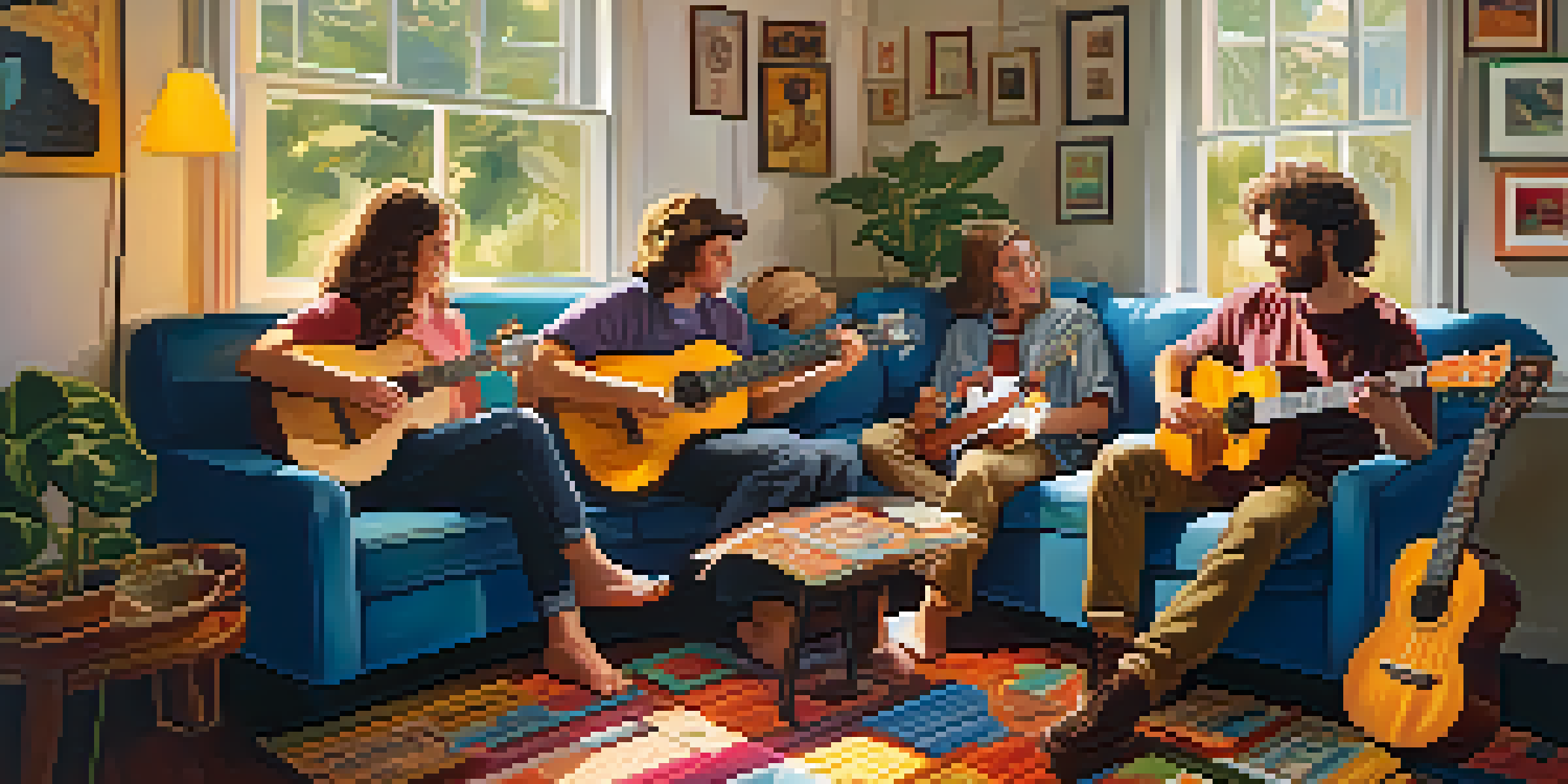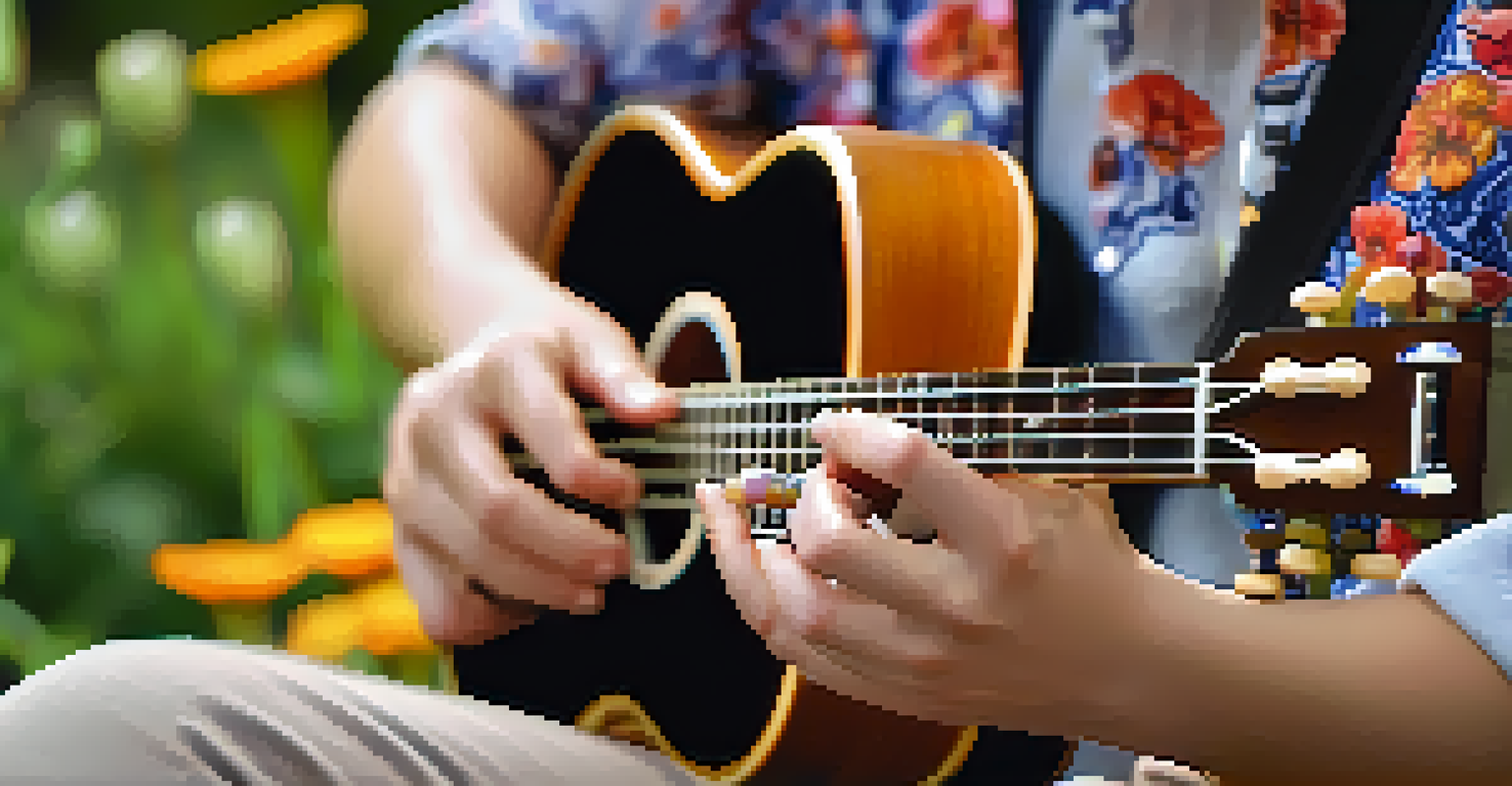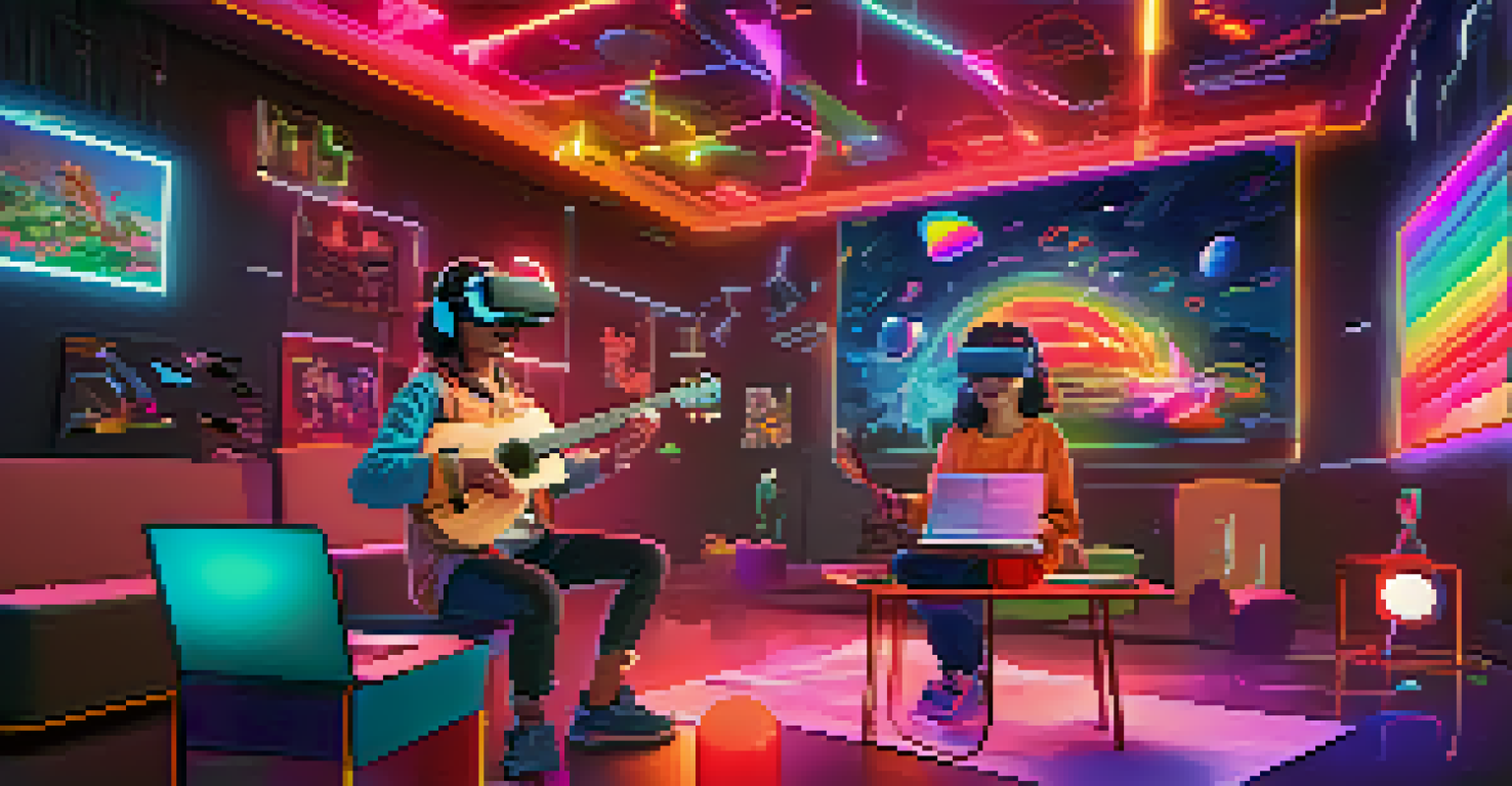The Evolution of Ukulele Tutorials in the Digital Age

The Early Days of Ukulele Learning: A Personal Touch
In the past, learning to play the ukulele often meant attending in-person lessons or relying on printed sheet music. This hands-on approach allowed for direct feedback from instructors, making it easier for beginners to grasp the basics. However, it also meant that access was limited to those who could afford lessons or had teachers nearby. The intimate setting of a classroom fostered a community feel, but it left many aspiring players outside looking in.
Learning is not the product of teaching. Learning is the product of the activity of learners.
Imagine a small gathering where friends would sit around strumming chords together, sharing tips, and learning from one another. This kind of organic learning was beautiful, but it also had its drawbacks, as not everyone had a supportive circle of musicians. The need for more accessible learning methods became evident as interest in the ukulele grew, especially in the 20th century.
As the popularity of the ukulele soared, particularly due to its appearance in pop culture, the demand for more flexible learning options became apparent. The stage was set for a shift, one that would embrace technology and reach a broader audience.
The Rise of VHS and DVD Tutorials: A New Era
With the introduction of VHS tapes and later DVDs, aspiring ukulele players gained access to a wealth of instructional content right in their living rooms. These formats allowed users to pause and rewind, providing a self-paced learning experience that was previously unimaginable. Many talented musicians began producing their own tutorials, which helped democratize the learning process.

Imagine being able to watch your favorite ukulele player break down their techniques in the comfort of your home. This shift not only made learning more accessible but also allowed for a variety of teaching styles to emerge. From traditional strumming patterns to modern fingerpicking techniques, students could explore different approaches without being tied to a single instructor.
Evolution of Ukulele Learning
Ukulele learning has transformed from in-person lessons to a diverse range of online resources, making it more accessible to everyone.
However, while VHS and DVDs were a step forward, they still had limitations. You needed to have the right equipment, and once you mastered the material, the content became outdated, leaving learners hungry for more up-to-date resources.
The Internet Boom: Online Resources Transform Learning
The dawn of the internet marked a significant turning point for ukulele tutorials. Suddenly, musicians could create and share their content on platforms like YouTube, making lessons available to anyone with an internet connection. This explosion of online resources made it easier than ever for aspiring players to find tutorials that catered to their specific interests and skill levels.
The beautiful thing about learning is that no one can take it away from you.
Picture a world where you can learn your favorite song by simply typing its name into a search bar and finding a plethora of tutorials at your fingertips. This newfound accessibility encouraged a diverse community of learners and teachers, leading to the emergence of viral trends, challenges, and collaborations in the ukulele space.
The online realm also allowed for real-time feedback through comments and live sessions, fostering a sense of community that mirrored the earlier, more personal learning experiences. However, this vast sea of content also posed challenges, as learners had to sift through varying levels of quality and teaching styles.
Social Media's Role in Ukulele Education
Social media platforms like Instagram and TikTok have revolutionized how ukulele tutorials are shared and consumed. Short-form videos have made it possible for musicians to provide quick tips, tricks, and song snippets, capturing the attention of audiences in mere seconds. This has encouraged a fresh wave of creativity, as players are inspired to showcase their skills and share their unique styles.
Imagine scrolling through your feed and stumbling upon a catchy ukulele riff or a fun chord progression challenge that instantly piques your interest. These bite-sized tutorials make learning feel less daunting and more engaging, allowing users to incorporate music into their daily lives effortlessly. The power of social media lies in its ability to connect individuals from all walks of life, creating a global community of ukulele enthusiasts.
Social Media's Creative Influence
Platforms like Instagram and TikTok have popularized short tutorials, fostering a global community of ukulele players eager to share their skills.
Yet, while social media fosters creativity, it can also lead to an overwhelming amount of content. Beginners might find it challenging to discern which tutorials align with their learning goals, making it essential to curate their feeds thoughtfully and seek out reputable sources.
The Impact of Mobile Apps on Ukulele Learning
Mobile applications have further simplified the ukulele learning process, offering users interactive tools right in their pockets. Apps like Yousician and Ukulele Tabs provide instant feedback, chord charts, and even song libraries, making practice more engaging and effective. The gamified elements found in these apps motivate learners to progress at their own pace while enjoying the experience.
Picture pulling out your phone during downtime and practicing a new chord or song while waiting for your coffee. This convenience has made it easier for people to fit music into their busy lives, breaking down barriers that once made learning the ukulele feel like a daunting task. Furthermore, many apps offer tutorials for songs that are currently trending, keeping the learning experience fresh and relevant.
However, while apps can be highly beneficial, they are no substitute for personal interaction. Balancing app-based learning with community engagement can lead to a more well-rounded musical education and help players develop their unique voice.
Online Communities and Their Influence on Learning
Online communities dedicated to ukulele enthusiasts have blossomed in recent years, providing spaces for learners to connect, share experiences, and seek advice. Platforms like Reddit, Facebook groups, and dedicated forums have created supportive environments for players of all levels. This sense of camaraderie can be incredibly motivating, as people share their triumphs and challenges alike.
Imagine being part of a group where everyone shares your passion for the ukulele, exchanging tips, song suggestions, and even hosting virtual jam sessions. These communities have helped demystify the learning process, proving that everyone faces hurdles and that support is crucial in overcoming them. Online challenges and collaborations can also spark creativity and inspire players to step outside their comfort zones.
Future of Learning with Tech
Emerging technologies like VR and AI promise to further enhance ukulele education, creating immersive experiences while maintaining community connections.
Nonetheless, it's essential to approach online communities with an open mind. While they offer a wealth of knowledge, they can also present conflicting opinions and varying teaching styles, making it crucial for learners to find their path while staying true to their musical aspirations.
The Future of Ukulele Tutorials: What Lies Ahead?
As technology continues to evolve, the future of ukulele tutorials promises even more innovative learning experiences. Virtual reality (VR) and augmented reality (AR) are on the horizon, potentially allowing learners to have immersive experiences that replicate one-on-one instruction in a virtual setting. This could revolutionize how we learn and interact with music, breaking down geographical barriers.
Imagine putting on a VR headset and finding yourself in a virtual classroom with a world-class ukulele teacher, receiving real-time feedback as you play. Such advancements could provide invaluable experiences that make learning more engaging and effective. As new technologies emerge, we can expect to see more integration of AI-driven platforms that can adapt to individual learning styles.

However, as we embrace these developments, it's essential to preserve the essence of community and connection that has always been at the heart of music education. Balancing technological advancements with personal interaction will ensure that learners continue to thrive in their musical journeys.